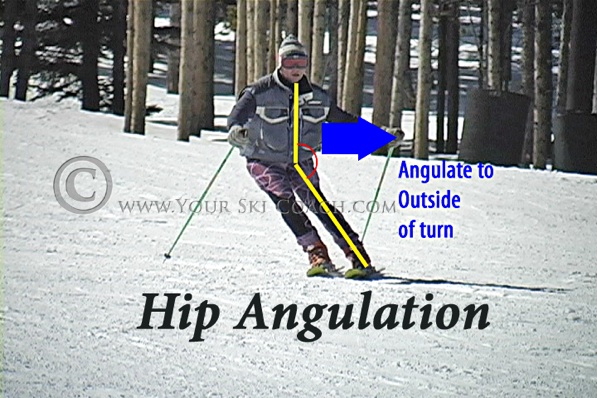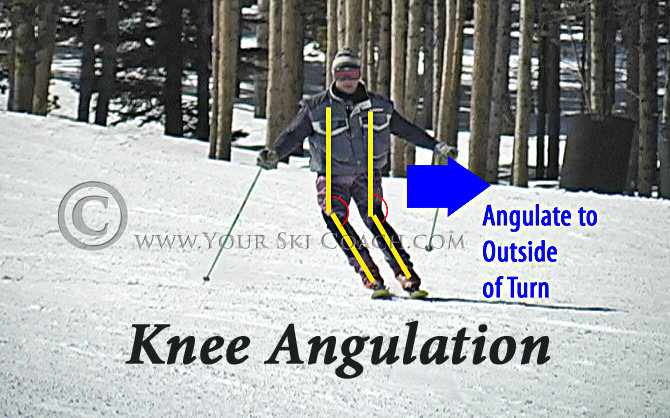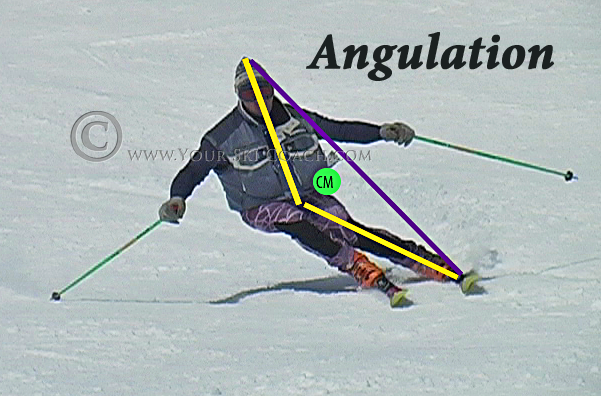Glossary
Angulation
Glossary
Angulation

Angulation
Angulation is a tool skiers use to manage and stay in lateral balance. By angulating, a skier can change the location of their Center of Mass, thereby precisely managing how much weight they direct to each of their inside and outside skis. The choice of how much angulation is used carries significant consequence on how efficiently a person is able to ski.
To angulate, a skier creates an angle at the hip, and/or knee, which moves body mass towards the outside of the turn. Doing so moves more weight towards the outside ski. How much a skier needs to angulate to maintain optimum lateral balance depends on the nature of the individual turn, and the properties of the ski being ridden. Some turns require very little angulation, while the absence of angulation during other turns will result in a fall.
Hip Angulation
Knee Angulation
A form of angulation that involves flexing in a manner which creates an angle in the pelvic area, between the torso and the upper leg. Done properly, body mass above the pelvis moves laterally, towards the outside of the turn, shifting more weight to the outside ski.
Hip angulation is not the most intense form of angulation a skier can use, that award goes to knee angulation, but it is the safest. When employing pure hip angulation, the outside leg is kept quite extended, devoid of knee angulation. It’s called keeping the outside leg “long and strong”. The bones of the upper and lower outside leg become aligned, maximizing the skiers ability to withstand the high turning forces encountered in aggressive skiing.
When angulation is required during high force load skiing, such as when speeds and edge angles are large, hip angulation should the go-to choice.
Note: because flexion potential in the pelvic area is higher in the forward direction than it is laterally, hip angulation is most effective when combined with counter. Counter involves rotating the pelvis towards the outside of the turn. By rotating the pelvis outwards, hip angulation can be achieved through forward flexion.
A form of angulation that involves flexing in a manner which creates an angle at the knee, between the upper and lower leg. Done properly, body mass above the knee moves laterally, towards the outside of the turn, shifting more weight to the outside ski.
Knee angulation is the most intense form of angulation a skier can use. It carries the potential to move a skier’s balance point further to the outside of the turn than any other type of angulation. The negative aspect of using it, is it weakens the structural integrity of the outside leg, introducing a higher risk of injury.
Generally, knee angulation is best used when hip angulation just won’t provide enough, or in small doses, for the purpose of quickly micro managing lateral balance during the course of a turn.
It should be noted, a healthy knee has little capacity to flex laterally. As such, effective knee angulation requires a rotation of the upper leg towards the inside of the turn. This allows normal flexion of the knee to produce a lateral angle.



